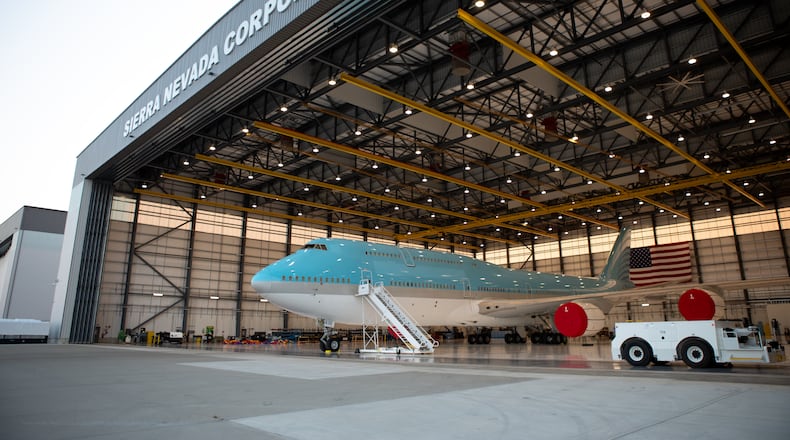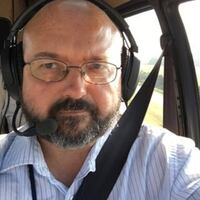“Delivery of the aircraft signifies the next phase of SAOC (’Survivable Airborne Operations Center’) engineering and manufacturing development since the contract award in April 2024,” the company said.
Under a contract from the Air Force Life Cycle Management Center (which is headquartered at Wright-Patterson Air Force Base), SNC will modernize planes to replace the Air Force’s aging fleet of E-4B “Nightwatch” aircraft, which first entered service in the mid-1970s.
Last month, SNC was approved to receive $500,000 in Montgomery County development funding to encourage further investment in the company’s growing Dayton complex.
This highly modified aircraft are meant to serve as airborne command centers for the president, secretary of defense and chairs of the joint chiefs of staff to ensure continued command, control and communication during national emergencies.
SNC said it is working with a Wichita State University team to take advantage of that university’s experience in composites and advanced materials, digital twin software, advanced manufacturing technologies and other areas.
Credit: Jim Noelker
Credit: Jim Noelker
A digital twin can be thought of as a virtual replica of a physical object.
“Our customers have asked for an open architecture solution, digitally twinned, in order to reduce life cycle costs for this important mission,” Jon Piatt, SNC executive vice president, said in a statement.
A company representative said he could not disclose where the aircraft will travel next “due to program sensitivity.”
In October, SNC cut the ribbon on a second state-of-the-art hangar and simultaneously broke ground on two planned hangars.
The Air Force’s selection of SNC for the SAOC program marked one of the largest aircraft modernization contracts awarded to a company other than an original equipment manufacturer.
The project includes contributions from Collins Aerospace, GE Aerospace — two companies with a Dayton-area presence ― Greenpoint Technologies Inc., Lockheed Martin Skunk Works and others, the company said.
About the Author

